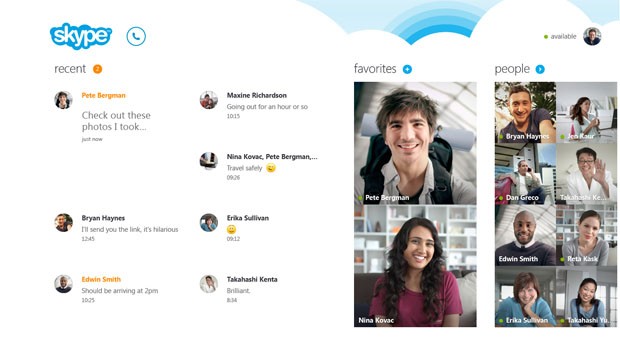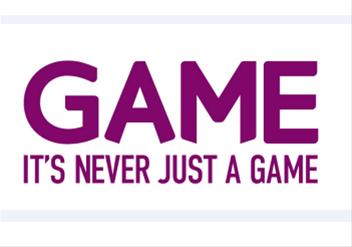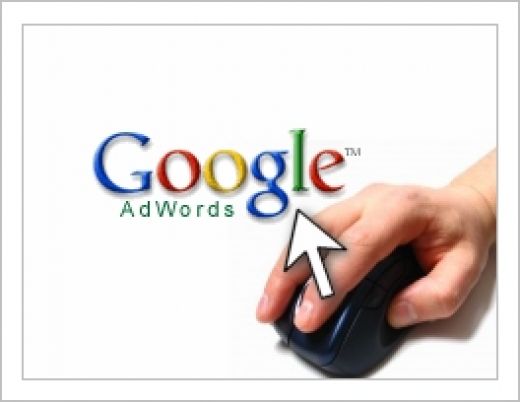Media Rockstar Ted Dhanik, CEO of Engage:BDR talks about what is hot in lead generation: click-to-call. Media buyer affiliates are having a lot of success on click-to-call using with their partnership of HitPath. He also talks about the problem with “fat fingers” and how its not really affecting performance.
Clash Group Rises from the Ashes
If you are curious what happened to Clash Media, the company that went belly up in the US a little under a year ago, here’s some new information. No one was sure what happened to the company, and more than a few people were left with bill unpaid. Now the original CEO and owner Simon Wajcenberg answers some questions about the future of the company, what they are doing and how they have transformed from Clash Media to Clash Group.
Size Does Matter: Affiliate Incentive Programs
Smart bosses know that employee appreciation programs with meaningful incentives are the best way to maintain a happy and productive workforce. In affiliate marketing, it’s no secret that affiliates put more effort into promoting for managers and networks that show their appreciation through realistic incentives. Too often, affiliate rewards programs backfire because they were implemented with a “one size fits all” mentality. I’m here to tell you that size does matter. While offering the same incentives to all affiliates is certainly easy and convenient for the affiliate manager, some affiliates – specifically the top producers – might see the reward as an insult. Offering a bonus to affiliates who double their sales in a given time frame sounds generous on the surface, but it will be next to impossible for your rock star sellers to achieve that level. As a result, they will pour their efforts into programs that offer more attainable goals.
Size Matters. We’ve all heard of the 80/20 rule: 80% of your traffic is driven by 20% of your affiliates. The bottom line is that your top performers are essential to the success of your program, and you need to show your appreciation in a meaningful manner. When creating the perfect affiliate incentive program, ask yourself how your rewards program will impact your top-tier affiliates. Will they see it as a true incentive or a punishment?
Develop an LTIP. Consider a Long-term Incentive Plan (LTIP) for top money-makers who consistently maintain or exceed a pre-determined level of sales. Maybe that takes the form of an increasing commissions ladder where for every year an affiliate stays with you and maintains top-tier status, his or her commission automatically bumps up a rung. You could also offer a milestone incentive program that rewards loyalty and pays out at the three- to-five year mark. The benefit of offering an LTIP is that you retain quality affiliates in exchange for, hopefully, some measure of loyalty.
Create a STIP. If an affiliate rewards program has an LTIP, it should also have a STIP. You guessed it: Short-Term Incentive Plan. This could be something as simple as a limited-time bonus offer that encourages affiliates to bump their sales by a pre-set percentage by a certain date. Or, you could offer an increased commission on a particular product or category. This works well if you have extra inventory or a new product to promote. Again, size matters. You should create one program for your middle- and bottom-tier partners and a separate program for your superstars.
In addition to providing a means to show your appreciation to your partners, incentive programs have the added bonus of encouraging affiliates whose sales linger in the middle-to-low range to step up their game. Ideally, your goal is to gain more top-tier performers. Once your mid-level affiliates realize that they can successfully convert on your products, they will likely keep up their increased performance level and recognize that size does matter.
CEO: Patience Not Aggression Equals Success
Usually, we look to those with experience and a lot of hours on their belts for the advice that will get us on the right track. However, sometimes it seems that the people that have very little experience do actually know what they are talking about. What I am referring to is a bit of advice that was given by a brand new company, that buys and sells used smartphones, called Mobixa in an interview with The L.A. Marketing Examiner. Mobixa’s CEO, David Safai, explains that when it comes to marketing a business in today’s mobile world, aggression is most certainly not the key aspect, but instead patience and strategy will see results.
In the interview, Safai explains:
“Mobixa, LLC is a small company that began in mid 2012 from our parent company, IMC, which has been around for over 15 years. I got into the wireless industry in 1996 working from my parent’s basement buying and selling old cell phones to people in South America since many are on a waiting list to get one.”
After explaining just where his company came from, and how new to the world of big business Mobixa actually is, Safai continues on to explain how he was talked out of aggressive marketing tactics. Here is what he stated in the interview with the L.A. Marketing Examiner, as reported in their article:
“Originally I wanted to be aggressive with our marketing and play these Internet ads three times a week. However, our team advised us that we don’t want to overwhelm the consumer and eventually they’ll get to the point of hearing from them. The advice was the exact opposite of what I was expecting to hear, but I learned that if you just educate people, in time they’ll come to you.”
Now, although this company that buys and sells old smartphones is probably no big news to most readers, the advice that the CEO, David Safai received could be exponentially valuable. Mobixa is just one of many companies today that is starting to realize that by overwhelming consumers with advertising and shoving too much content in their faces, marketers are accomplishing just the opposite of what they had intended in the beginning. In the case of mobile specifically, the industry is still far too young for marketers to be bombarding mobile consumers with the amount of marketing content that is being thrown at them.
Mobile marketing should instead, according to the advice that Safai received, be approached with a patient mindset. Marketers should strategize and find the most effective way to market to mobile consumers without overwhelming them, and over time a response to these marketing efforts will be seen. To be aggressive in marketing has always been viewed as a good thing in one way or another, but according to Safai’s marketing team, the best way to see results is through patience, which may be a problem for those businesses that do not necessarily have the time to wait it out.
—–
Sponsored by Ad4Game
The Industry’s Largest Cost Per Download Company
What is Twitter’s Impact on Online Shopping Decisions?
Twitter may not be as popularly used as Facebook is, but it is still among the top networks in social media marketing. As one of the most used networks by users, Twitter has a lot of importance to the digital marketing community. Whenever marketers start a new campaign on a new social network, the ultimate goal is to drive sales, after everything else. With a time of enormous amounts of shopping quickly approaching, it is important for marketers to know whether their social media marketing efforts are going to lead consumers to the sales that they desire. Twitter recently conducted some research to find out just how their network has been and will in the future, impact consumer purchasing decisions.
Over the course of a few weeks, Twitter partnered with Compete, a market research and analytics company, to conduct a study of 2,600 US internet consumers that would help to determine the impact that Twitter marketing has on internet shopping. The study was based on those consumers who saw the Tweets from over 700 popular brands, while condensing the study to desktop activity and excluding mobile and tablet activity.
Here are the two major facts that came of the results of this survey, from Compete’s reporting:
- Twitter users who see Tweets from retailers are more likely to visit retail sites
Key takeaway: Twitter users are big online shoppers, but big brands aren’t the only retailers that benefit. Twitter brings people closer to a wide range of interests so niche retailers who engage the highly engaged audience on Twitter often see stronger results than mass retailers.
- Twitter users who see retailer Tweets are more likely to make online purchases
Key Takeaway: People who see a retailer’s Tweets are even more likely to make an online retail purchase than they are to visit retailer websites. This means Twitter users arrive on a retail website with a higher intent to buy.
The everyday internet user, who does not necessarily see a Tweet from the company beforehand, visit retail websites at a rate of 90%, while those internet users who do see the Tweets from retail businesses visit retailers at a 95% rate. Of the entire report, that fact may be the most important. The 5% difference between the rates of visiting clearly shows an impact from Tweets by companies. Also, these general internet users made purchases from retail sites at a rate of 27%, and Twitter users being impacted by brand Tweets made purchases at a rate of 33%.
The idea behind the survey was to prove that Twitter had an impact in online sales, and it has done just that. With a 5% difference in visitation rates and a 6% difference in purchase rates between general internet users and Twitter users, there is a clear and defined impact from Twitter on the decisions of internet shoppers. Twitter has made a great move putting out information like this, especially during the time of year where internet shopping really counts.
Guess What? 70% of Facebook Pages Dead
Facebook Pages, being as popular as they have become today, get a great amount attention from digital marketers and marketing researchers alike. For many of the internet’s most popular brands and businesses, Facebook Pages have proven to be one of the most effective marketing tools that they currently use, and small businesses enjoy the practically free marketing that Pages offer. Essentially, opinions about Facebook Pages are high, and few people have complaints about their success with them. Now, a recent study is suggesting that Facebook Pages are not seeing that activity that people have thought they were. Along with this lack of activity, the study shows a few facts about Facebook that might hurt its reputation for some marketers.
The study comes from Recommend.ly, a company that provides tools and analytics in the line of social media. It takes a look at the entire picture of Facebook pages, and the results do not look as good as one would expect.
The most significant data it seems, comes from a table included in the report of the study’s findings, showing how many updates per month each type of business using Facebook Pages posts. In the category of 0 updates per month, we see that 70.1% of all Facebook Pages are almost entirely inactive. Another 8.2% only post about 1-5 updates per month. Although the majority is at zero, there are 18.6% of the total that post 6-99 updates per month on their Facebook Pages.
Here is a list of the Key Findings in the report:
About 2 out 3 Facebook Pages are inactive in some way:
- 63.9 per cent Pages have no cover photo
- 70.1 per cent Pages make 0 posts a month
- 83.4 per cent Pages never participated in conversations
- 50 per cent Pages have less than 300 fans
- Pages are found to be making lesser posts in October 2012 compared to March 2012. Average number of Page posts fell by 19 per cent since March.
- Engagement Rates of Page posts across categories have fallen since March by an average of 40 per cent
- 50-60 per cent of content on Pages is now visual content (photos or videos) compared to just 15-20 per cent in March
Overall, it seems that very little good news about Facebook Pages has come of the new report, and it shows that Pages may not be as great a choice as everyone seems to think. Sure, they come at no charge to marketers, but the results that are being seen and the amount of activity that actually takes place with them may make them not worthwhile.
Facebook Pages will continue to be used, of course, for regardless of the results of this study, there are some brands and companies that see some of their greatest success with Facebook. Also, these Pages would surely be much more successful is marketers were to put in more time and effort managing them. It is the fault of the Pages users that engagement is low and fans are few, as without much for Facebook users to look at in the way of updated activity, there is no reason to engage with the page.
—–
Sponsored by BlastOffers
Unique Offers with Unique Payouts
Content Marketers Face Serious Issues
It appears that content marketing has been growing rapidly in popularity, especially in business to business marketing. It has become one of the more prominent forms of marketing amongst the many, and it has become very important to keep tabs on the state of content marketing on the web. A recent eMarketer article details the recent challenges that have begun appearing in the content marketing world, referring to data from a content curation platform called Curata. The company’s “B2B Marketing Trends 2012 Report” shows information that points to originality arising as the biggest challenge that content marketers are facing today, closely followed by time management.
To get a better sense of how popular content marketing has actually become, the information from Curata shows that 87% of all business to business marketers are now using content marketing as part of their marketing campaigns this year. In 2011, the percentage was at 82%. So, with an already high level of interest in content marketing, 5% is quite a significant increase. This year, content marketing was the highest of all tactics that were studied. Just behind it with 62% was search marketing, which seems to get more attention that content marketing does.
To avoid the challenges that come with content marketing, some marketers chose to have their marketing curated, according to the study.
But doing it well is another story. Among those using content marketing, 57% used content curation specifically as part of their strategy. And just 43% of those respondents said their content curation programs had been successful by the standards they had chosen to measure them. On the other hand, another 43% said they didn’t even attempt to measure their programs’ success.
For content marketers who take on the challenge, the biggest issue according to the study was creating original content in their marketing campaigns. A total of 69% of the respondents in the study said that originality was their largest issue in creating a successful content marketing campaign. After that, 65% of the respondents said that finding the time to create content for marketing was the largest issue they experienced. Another 43% of content marketers, who could not create original content, said that their biggest issue was finding high-quality content. Other issues that content marketers faced included difficulty measuring results (40%), allocating staff to market with content (34%), finding ways to share content (24%), organizing content (22%), securing senior level buy-ins (15%), and finding how content marketing fits into the marketing strategy (12%).
Clearly, content marketing has become very popular amongst marketers of all types, and it will continue to grow in popularity. Therefore, marketers need to seek solutions to creating original content, through research and creative thinking. Creating original content clearly is not easy, but it is necessary in order to see the results that all marketers want. It takes time, which is another popular issue, but when original content is created, it usually proves to create great results, therefore it is worthwhile.
Skype’s Overhaul for Windows 8, Betting on Mobile
Although smartphones have become a necessity in today’s digital world, we all know that cell phones are not the only tool that people are using to make calls these days. Skype has become one of the most popular ways for people to speak to each other face to face, while not actually being face to face. Because of the company’s popularity in the field, they have become one of the most popular places for marketers to advertise to digital callers. Now, the company is announcing a complete overhaul of their advertising offerings, upon the release of Windows 8. These changes are supposed to begin being available by the first quarter of next year.
According to a recent ClickZ article, written by Susan Kuchinskas, there are three major components to Skype’s big alteration.
The three Components to the rebuild include:
- Skype users will potentially be able to collaborate on content upon the release of rebuilt offerings. This will be a way to build on the company’s current Conversation Ads that are currently running.
- Sponsored content that would allow marketers to encourage sharing. The example given by Sandhya Venkatachalam, the general manager of advertising and monetization at Skype was, “An airline, instead of doing traditional display advertising, could share info with the Skype audience about vacation spots for the holiday season. The airline could develop within Skype a branded trip planning tool.”
- The third component, which was explained a bit unclearly, is a way for brands to stay present on Skype, with Skype users. Marketers and brands will be able to create a “persistent, branded presence.”
All of these changes are being made with a focus on Skype becoming a more prominent name in the mobile community. Venkatachalam stated, “We’re making a huge bet on mobile. That’s definitely the future of Skype.” Upon the early days of the releasing of these new improvements, they will only be seen on devices that function under the Windows 8 operating system. However, later on down the line they will be made available on Android and iOS devices as well.
Skype is still a relatively new company when it comes to advertising, but they have not seen much complaint regarding their advertising offerings. With these big changes that are soon to be made, as well as their forecasted switch to being a primarily mobile service may give Skype a bit more of the prominence that they are searching for. Their Conversation Ads from earlier this year were welcomed by most marketers, because they were one of the first ways for brands and businesses to advertise to people while they were physically speaking with their friends face to face. The changes that Skype is planning on making seem as though they will most certainly improve upon what they already offer as well as the results they bring in. Essentially, Skype will be becoming a more valuable and functional tool for marketers looking to advertise with the company.
Poker May Not Be Illegal Gambling According to Federal Court
A federal judge in New York has held that Texas Hold ‘Em poker is a game of skill and not illegal gambling under federal law. This is the first time a federal court has held that poker is not gambling under the Illegal Gambling Business Act (the “IGBA”).
The issue of whether poker is a game of chance or skill has been a hot button issue recently and has received relatively inconsistent treatment from state to state. The majority of state courts have found that an activity is illegal gambling if a person risks something of value on an activity predominately determined by chance for the opportunity to win something of greater value than he or she risked.
Most federal courts have considered poker to be a game of chance and therefore characterized it as gambling.
In large part, the decision focused on research by an expert statistician and competitive poker player who provided studies of online poker games to prove that despite luck determining what cards players receive, skill is the predominant factor in succeeding. The information presented suggested that a player’s abilities “permit the best poker players to prevail over the less-skilled players over a series of hands.”
In arriving at its decision the court stated that poker involves an “array of talents.”
So, while the federal court ruling does not overturn state illegal gambling laws, some of which include poker in their statutes or define it as a game of chance (for example, Connecticut, Wisconsin, Arkansas and Florida), it may have a significant impact on the treatment of poker under United States law.
Despite the fact that the government intends to appeal the decision, the ruling should go a long way toward assisting marketers that conduct skill-based promotions.
Consult with an advertising, marketing and promotions law attorney for guidance regarding games and contests under state lottery laws to ensure that they are genuinely skill-based.
Information conveyed in this article is provided for informational purposes only and does not constitute, nor should it be relied upon as legal advice. No person should act or rely on any information in this article without seeking the advice of an attorney.
$100k A Month on Re-targeting + $100 Free Ad Credits
If you are a marketer that hasn’t tried re-targeting, you are missing out on a proven traffic source. In this interview with Adam Berke, the President of AdRoll talks about how re-targeting works – and how anyone can use it with no minimum budget. This allows marketers to re-target customers to get them to convert if they didn’t the first time. This also allows you, if you are an affiliate creating your own landing pages, to target those customers that converted on one offer with similar offers. Does this work? Yes!
Register for an account at AdRoll and get an $100 in free in retargeting! Use Promo Code PI100
ADTECH NYC 2012 Party Official Video Released
Here it is, the official AD:TECH CPAWAY, ADKNOWLEDGE and CLICKBOOTH party video. Of course, brought to you by those great guys and the Performance Marketing Insider Team. If you haven’t seen it yet, here’s the time to see the industry, dancers and yes, little people get busy.
Sponsored by CPAWAY
Vacation Rental Affiliates get an outstanding 8%
Netamatix launched their online booking system in 2007 and have built an affiliate network to plug into the booking engine. The system has seen unprecedented increases.
Affiliate marketing is breaking the stranglehold of the major corporate listing sites and creating more choice and lower advertising rates across the Villa online booking industry.
Mark Craven, the company’s operations director explains, “We recognised the industry was moving to a few dominant listing websites creating a stranglehold on owners and forcing up advertising costs. Predatory corporate organisations are buying up all the smaller websites creating less and less choice for owners to advertise. Our system enables smaller sites to compete as part of a larger network, earning commissions per booking and supplying them with a ready made stock of properties that accept live bookings.”
Affiliate websites can both source new rental properties from the network and also upload new properties to it and earn commission levels up to 8% on bookings processed. With the average basket value standing at $3200 the earning potential from online bookings is outstanding.
Netamatix are recruiting now for the next summer season, of particular interest to Netamatix are vacation rental agencies, small niche travel websites and travel businesses based in resorts around the world. Contact the company directly for more information.
About Netamatix
Netamatix are a UK vacation rental software company providing cutting edge tools for the industry. Technically advanced, the system comes with an intuitive and easy to use customer website to make it easy to manage reservations, payments and customers online 24/7, 365.
UK GAME Finds Winning Team with Affiliate Window
Google Holiday Improvements for Marketers: What you Need to Know for the Season
As you can tell by the absence of leaves on the trees, autumn is coming to an end, and that means that the holidays are just around the corner. With the holiday season comes shoppers, which essentially means it’s a big time of the year for marketers. Just like holiday shoppers, marketers will take all the help they can get this time of year, and Google is lending a hand in that regard. Using the holiday season as their main reason, Google has announced a long list of improvements that they are bringing to AdWords that will help marketers, “get local in time for the holidays and beyond.”
First, here is the list of changes that Google is announcing in their AdWords blog:
- Introducing airport targeting: A new way to reach travelers on the go
- Location extensions and sitelinks show together
- Larger, more useful maps
- Better location matching for customers
- Online conversion reporting for Location Extensions
- Geo-targeting and location extensions available in more countries
Each one of these changes and improvements was made for the sole purpose of easier transmission of local business information to consumers. By allowing marketers who use AdWords to reach consumers at airports while on the go through mobile platforms for example, companies can offer last minute opportunities for things like travel, entertainment, and dining.
One of the more significant improvements is better location matching for customers. Targeted advertising has seen great success in the past, especially with AdWords. Now, with the improvements, holiday marketing will be much more efficient and better targeted.
Although most of these changes are only slight, they are quite significant and will definitely come in handy during the hectic holiday season, as well as afterward. The online conversion reports on Location Extensions are brand new to Google, and with them marketers can get a better idea of how their extensions are affecting their overall conversion rates. Along with these reports, the combination of location extensions and sitelinks will allow for consumers to more easily navigate AdWords advertisements. When interested in something, everything they need to take things a step further will already be presented in front of them, including things like phone numbers, addresses, links to maps and even deals. This will greatly improve the chance of an eventual conversion from consumers, and proof of this will come in the form of the conversion reports for location extensions that Google is now offering.
Google will never stop trying to improve their AdWords network for its marketing customers, and it would come as no surprise if even more improvements were to be made by early next year. Making the holidays easier is something that everyone is looking to do, and in the case of marketers, it seems that Google has offered quite a few helping hands. Google’s idea this year is to help marketers “get local,” and more easily get their ads seen by those who are interested.




















